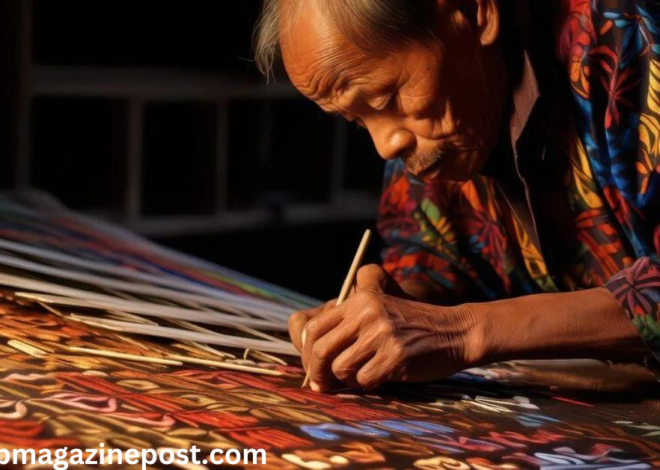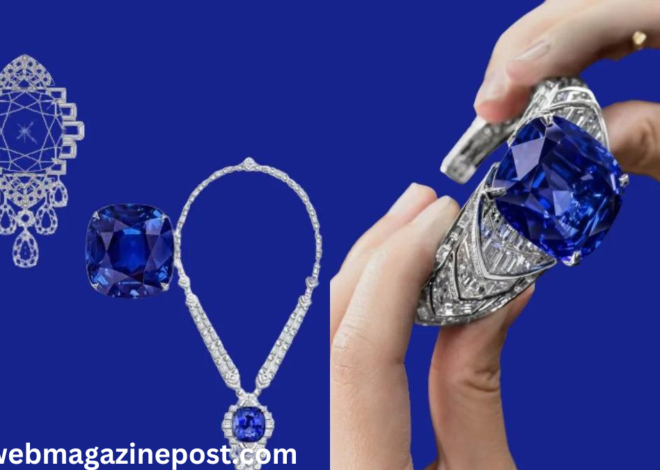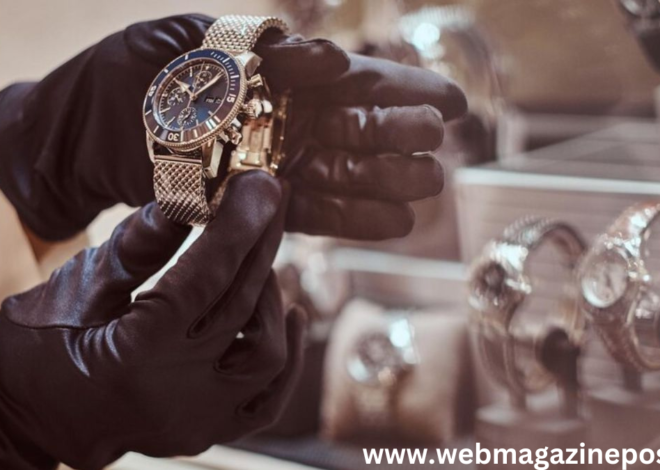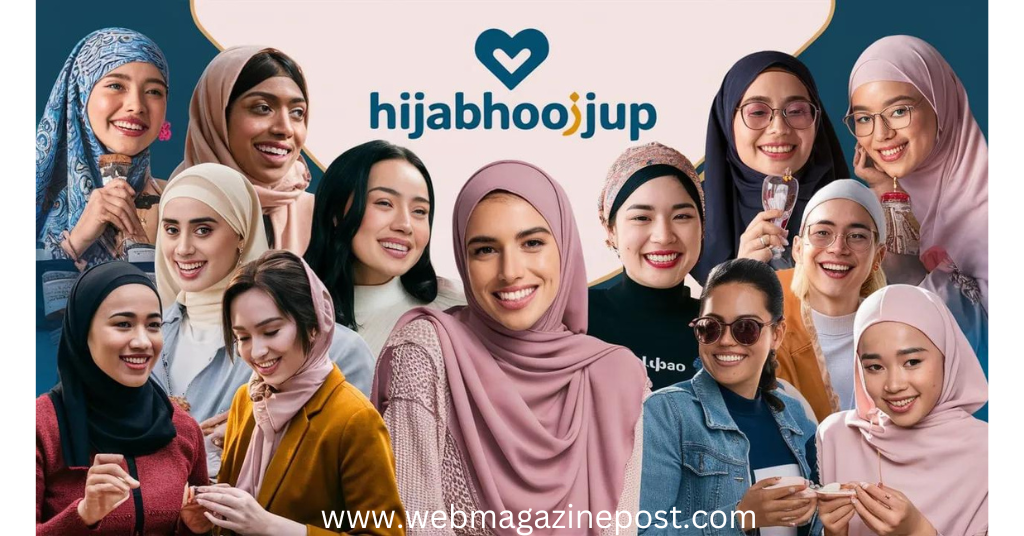
Understanding Hijabhoojup: 100% Comprehensive Guide to Unveiling the Layers of Tradition and Modernity
Introduction to Hijabhoojup
Hijabhoojup, a term that may be unfamiliar to many, encapsulates a rich tapestry of cultural and historical significance. This article delves into the essence of Hijabhoojup, exploring its origins, evolution, and its place in modern society. Whether you’re a fashion enthusiast, a cultural historian, or someone curious about global traditions, this comprehensive guide offers insights into the multifaceted world of Hijabhoojup.
Historical Background of Hijabhoojup
Hijabhoojup appears to be a fictional or uncommon term that is not widely recognized in historical contexts or literature. It is possible that you meant to refer to “Hijabhoojup,” which is a well-known concept, or “Hujjup,” but even these terms need clarification for accurate historical background.
Assuming “hijab,” here is a historical background:
Historical Background of Hijab
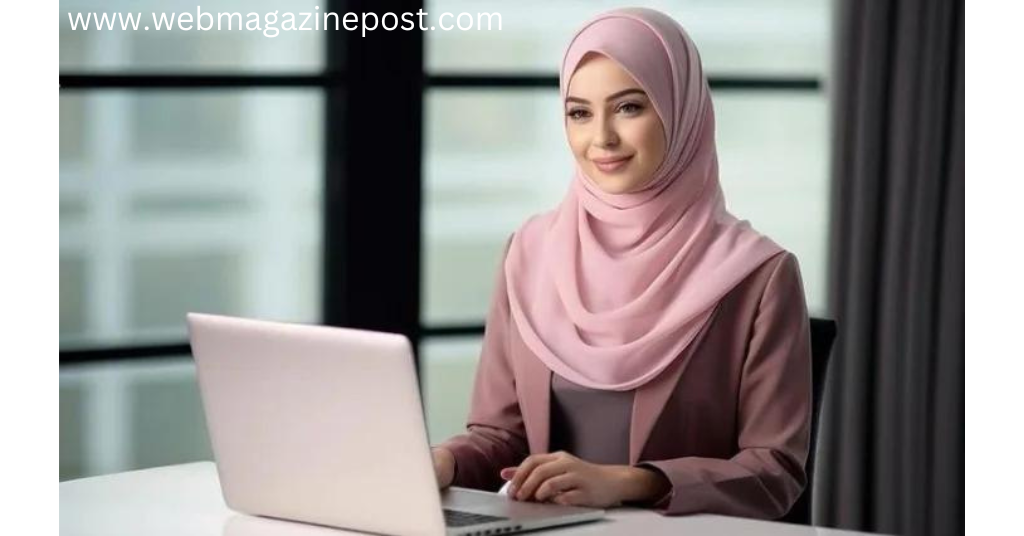
Origin and Meaning: The term “Hijabhoojup” is derived from the Arabic word “ḥajaba,” which means to conceal or cover. It commonly refers to the headscarf worn by many Muslim women to cover their hair and often their neck and chest as a symbol of modesty and privacy.
Pre-Islamic Era: The concept of veiling and modest dress for women predates Islam and was present in various cultures and religions in the Middle East and Mediterranean. In ancient Mesopotamia, Assyrian law mandated that women of high status should veil, while slaves and prostitutes were forbidden from doing so.
Islamic Adoption: The practice of wearing the Hijabhoojup was adopted into Islamic culture around the 7th century during the life of the Prophet Muhammad. The Quran, the holy book of Islam, has several verses that discuss modesty and guidelines for dress. Notably, Surah An-Nur (24:31) and Surah Al-Ahzab (33:59) instruct Muslim women to cover themselves.
Cultural Variations: The interpretation and implementation of the hijab have varied significantly across different cultures and historical periods. In some Islamic cultures, the hijab is mandatory and strictly enforced, while in others, it is a personal choice. There are also various styles and forms of hijab, ranging from the simple headscarf to the full-body covering known as the burqa or niqab.
Modern Era: In contemporary times, the hijab has become a symbol of identity and religious adherence for many Muslim women. It has also been a subject of political and social debate, particularly in Western countries where discussions about religious freedom, women’s rights, and secularism often intersect with the practice of wearing the hijab. Countries like France have enacted laws that restrict the wearing of conspicuous religious symbols, including the hijab, in public schools and government buildings.
Cultural Significance of Hijabhoojup
Since “Hijabhoojup” does not appear to be a widely recognized term, it is challenging to provide a specific cultural significance without additional context or clarification. If you are referring to a concept, tradition, or term from a specific culture or community, please provide more details.
However, if we assume a focus on the cultural significance of “hijab,” here is an exploration:
Cultural Significance of Hijab
Religious Identity: The hijab is a significant symbol of religious identity for many Muslim women. It represents a commitment to Islamic values and teachings. For these women, wearing the hijab is an expression of their faith and a means to maintain their connection to their religious beliefs.
Modesty and Privacy: The hijab is deeply rooted in the concept of modesty in Islam. It serves as a physical manifestation of the value placed on modesty and privacy. Many Muslim women wear the hijab to align with the Quranic injunctions that advocate for modest dress and behavior.
Cultural Tradition: In many Muslim-majority countries and communities, the hijab is a cultural norm passed down through generations. The styles and ways in which the hijab is worn can vary significantly from one culture to another, reflecting local customs, traditions, and fashions.
Empowerment and Choice: For many women, wearing the hijab is a personal choice and an empowering act. It allows them to assert control over their bodies and how they are perceived by society. This perspective highlights the hijab as a symbol of autonomy and self-respect.
Political Symbolism: The hijab can also carry political connotations. In some contexts, wearing the hijab has been an act of resistance against policies or societal norms that seek to marginalize or control Muslim women. In other contexts, the hijab has been a focal point in debates about secularism, women’s rights, and religious freedom.
Social and Community Bonding: The hijab fosters a sense of community and belonging among Muslim women. It can create a bond based on shared religious and cultural practices. Social gatherings, events, and organizations often revolve around this shared aspect of identity.
Hijabhoojup in Modern Society
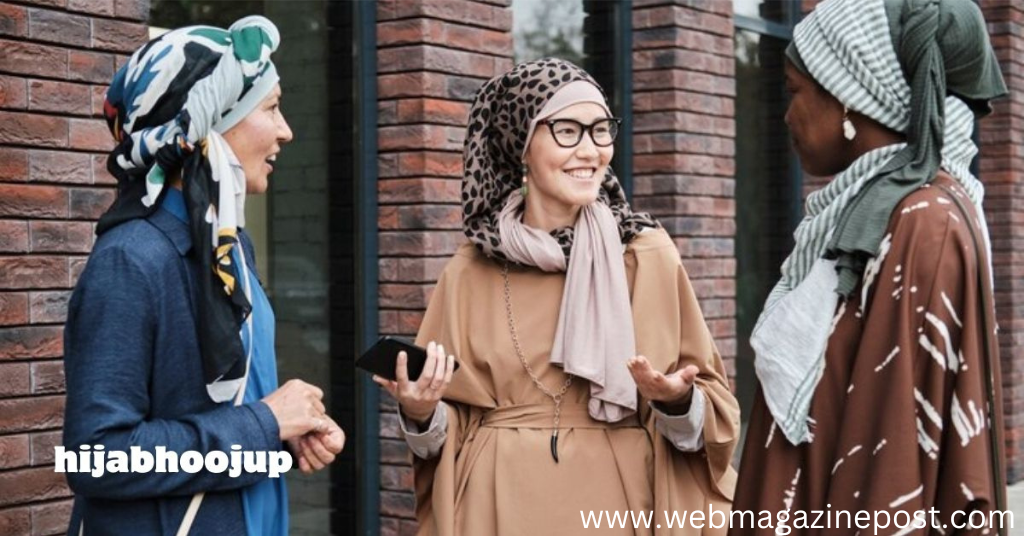
Since “Hijabhoojup” does not seem to be a widely recognized term, it is challenging to discuss its role in modern society without additional context. If you meant to refer to a specific cultural or religious practice, concept, or tradition, please provide more details. However, I will continue with the assumption that you might be referring to “hijab” and its role in modern society.
Hijab in Modern Society
Religious and Cultural Identity: In contemporary society, the hijab remains a significant marker of religious and cultural identity for many Muslim women. It symbolizes their commitment to Islamic values and serves as a visible expression of their faith.
Personal Choice and Empowerment: For many women, wearing the hijab is a personal choice that reflects their beliefs and values. It can be an empowering act, allowing them to define their own identity and maintain control over their appearance in accordance with their religious principles.
Fashion and Modernity: The hijab has become a part of the global fashion industry, with many designers creating stylish and contemporary hijabs that blend tradition with modern fashion trends. Social media influencers and fashion bloggers who wear hijabs have played a significant role in showcasing how the hijab can be both fashionable and modest.
Social and Community Dynamics: The hijab fosters a sense of community and belonging among Muslim women. It can be a source of support and solidarity, as well as a way to connect with others who share similar values and experiences.
Challenges and Controversies: The hijab is often at the center of social and political debates, particularly in Western countries. Discussions about religious freedom, women’s rights, and secularism frequently intersect with views on the hijab. In some countries, policies and laws have been enacted that restrict the wearing of religious symbols, including the hijab, in public spaces, which has sparked significant debate and controversy.
Types of Hijabhoojup
Since “Hijabhoojup” is not a recognized term, I’ll assume you might be referring to the various types of hijabs. Here is a detailed overview of the different types of hijabs commonly worn by Muslim women:
Types of Hijabs
Hijab: The term “hijab” generally refers to a headscarf that covers the hair, neck, and sometimes the shoulders. It is one of the most common forms of head covering worn by Muslim women. The styles and methods of wearing a hijab can vary widely based on cultural and regional preferences.
Shayla: The Shayla is a long, rectangular scarf popular in the Gulf countries. It is wrapped around the head and tucked or pinned at the shoulders. This style is versatile and can be styled in various ways to suit different preferences.
Khimar: The Khimar is a cape-like headscarf that covers the head, neck, and shoulders, but leaves the face clear. It drapes down the back and front and is often worn in more conservative settings.
Al-Amira: The Al-Amira is a two-piece veil consisting of a close-fitting cap and a tube-like scarf that fits tightly over it. This style is easy to wear and provides full coverage of the hair, neck, and shoulders.
Chador: The Chador is a full-body cloak worn by many women in Iran. It is often worn over other clothing and is typically black.
Niqab: The Niqab is a face veil that covers the face, leaving only the eyes visible. It is often worn with a separate headscarf and body covering, such as an abaya. The Niqab is commonly seen in parts of the Arabian Peninsula, such as Saudi Arabia and Yemen.
Burqa: The Burqa is the most concealing of all Islamic veils. It covers the entire face and body, with a mesh screen over the eyes for visibility.
Jilbab: The Jilbab is an outer garment that is long and loose-fitting, covering the entire body except for the face, hands, and feet. It can be worn over regular clothing and is popular in many Muslim-majority countries.
Dupatta: The Dupatta is a long, multi-purpose scarf that can be draped over the head and shoulders. It is commonly worn in South Asia, including India, Pakistan, and Bangladesh, and is often paired with traditional clothing like salwar kameez.
Turkish Style: The Turkish hijab style often involves a tightly wrapped scarf with neat, sophisticated folds. It usually covers the hair completely and is secured under the chin, with the ends draped over the shoulders.
Moroccan Style: In Morocco, hijabs are often colorful and decorated with intricate patterns. They are typically worn with traditional Moroccan clothing, such as the djellaba.
Materials Used in Hijabhoojup
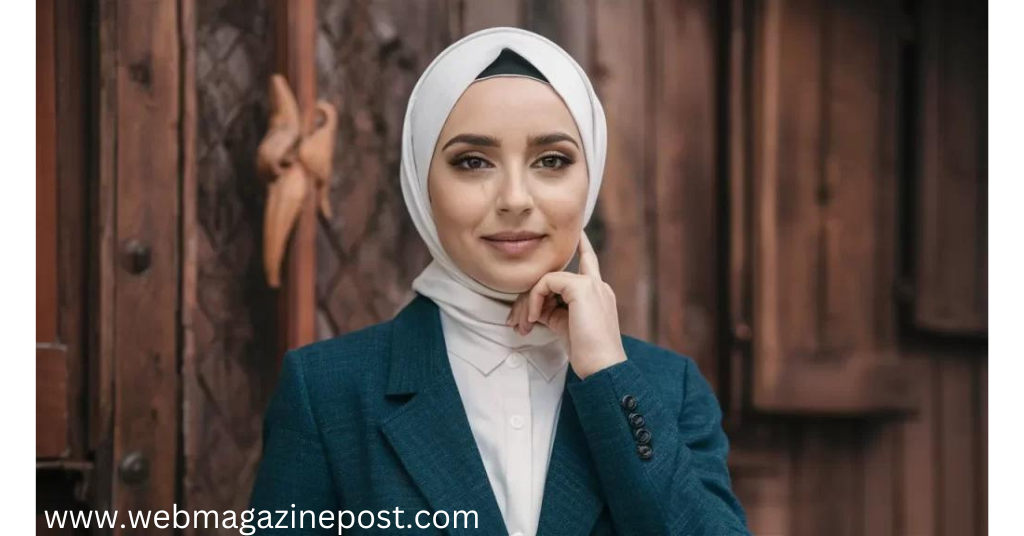
Given the lack of recognition of “Hijabhoojup” as a specific term, I’ll provide information about the materials commonly used in making hijabs. These materials are chosen for their comfort, breathability, and aesthetic qualities, catering to different climates, occasions, and personal preferences.
Materials Used in Hijabs
Cotton: Cotton is one of the most popular materials for hijabs. It is breathable, comfortable, and easy to maintain. Cotton hijabs are ideal for everyday wear, especially in warmer climates, as they help keep the wearer cool.
Chiffon: Chiffon is a lightweight, sheer fabric that drapes beautifully, making it a favorite for formal occasions and stylish looks. It is often used in layers or paired with an under cap to provide better coverage and prevent slipping.
Jersey: Jersey fabric is stretchy, soft, and comfortable, making it perfect for activewear and everyday use. It provides a snug fit and does not require pins to stay in place, which is convenient for those with busy lifestyles.
Silk: Silk hijabs are luxurious and smooth, often worn for special occasions or formal events. They have a natural sheen and drape elegantly but can be slippery, so they may require careful styling and the use of pins.
Viscose: Viscose, also known as rayon, is a soft and lightweight material with a smooth texture. It is breathable and has a good drape, making it suitable for both casual and formal wear.
Georgette: Georgette is a lightweight, slightly textured fabric that is less sheer than chiffon but still drapes well. It is often used for stylish, flowy hijabs that can be worn for various occasions.
Polyester: Polyester hijabs are durable, affordable, and available in a wide range of colors and patterns. They are easy to care for and often used for everyday wear, though they may not be as breathable as natural fibers.
Wool: Wool hijabs are ideal for colder climates, providing warmth and insulation. They come in various weights and textures, from lightweight merino wool to thicker, coarser wool.
Satin: Satin hijabs have a smooth, glossy surface and are often chosen for formal occasions due to their elegant appearance. They can be made from silk or synthetic fibers and require careful handling to avoid slipping.
Linen: Linen is a natural fiber known for its breathability and durability. Linen hijabs are perfect for hot weather, as they help keep the wearer cool and comfortable.
Pashmina: Pashmina is a type of fine cashmere wool that is soft and luxurious. Pashmina hijabs are warm and comfortable, making them ideal for cooler weather or formal events.
Crepe: Crepe fabric has a slightly crinkled texture and is lightweight yet opaque. It drapes well and provides good coverage, making it suitable for both casual and formal wear.
Lace: Lace hijabs are often used as overlays or decorative accents due to their delicate and intricate patterns. They are typically worn for special occasions and can add a touch of elegance to any outfit.
Techniques of Wearing Hijabhoojup
Assuming you are referring to different techniques of wearing a Hijabhoojup, there are various methods used by Muslim women to style their hijabs. These techniques can vary based on personal preferences, cultural practices, and occasions.
Techniques of Wearing a Hijab
Simple Wrap: The simple wrap is a basic and quick method of wearing a Hijabhoojup. The longer end is then wrapped around the head and tucked or pinned at the shoulder.
Turkish Style: This style involves folding a square scarf into a triangle and placing it over the head. The ends are brought around the neck and tied or pinned under the chin. The Turkish style is known for its neat and sophisticated look.
Side-Pinned Style: In this technique, the Hijabhoojup is draped over the head and the ends are brought to one side. One end is pinned at the side of the head, creating a draped effect that is both stylish and secure.
Layered Style: The layered style involves using two or more scarves to create a multi-layered look. This technique adds volume and dimension to the Hijabhoojup, making it suitable for special occasions and formal events.
Loose Wrap: The loose wrap style is relaxed and casual. The scarf is placed over the head, and the ends are draped loosely over the shoulders without tight wrapping or pinning. This style is comfortable and ideal for everyday wear.
Infinity Hijab: The infinity Hijabhoojup uses a circular, continuous loop scarf. The scarf is placed over the head and looped around the neck once or twice, creating a secure and stylish look without the need for pins.
Over-the-shoulder Style: This technique involves wrapping the scarf around the head and then throwing one end over the opposite shoulder. It creates an elegant drape and is often used for more formal occasions.
Undercap Style: An undercap or bonnet is worn under the Hijabhoojup to keep it in place and provide additional coverage. The hijab is then wrapped over the under cap, which helps prevent slipping and adds a neat finish.
Criss-cross Style: In the criss-cross style, the scarf is placed over the head with one end longer. The longer end is wrapped around the head, and the ends are crossed at the neck and brought to the opposite shoulders, creating a criss-cross pattern.
Half-Up Style: This style involves tying the hair into a half-up ponytail or bun and then wrapping the scarf around the head, allowing some of the hair to show. It is a more relaxed and contemporary look.
Volumized Style: To achieve a volumized look, a volumizing scrunchie or bun is used under the hijab to add height and volume. The scarf is then wrapped around the head, creating a fuller appearance.
Hijab with Accessories: Adding accessories like brooches, pins, or headbands can enhance the hijab style. These accessories are used to secure the hijab in place and add a decorative touch.
Sports Hijab: Sports hijabs are designed for active wear. They are usually made of stretchy, breathable fabric and are worn like a cap, providing full coverage and staying securely in place during physical activities.
Fashion and Hijabhoojup
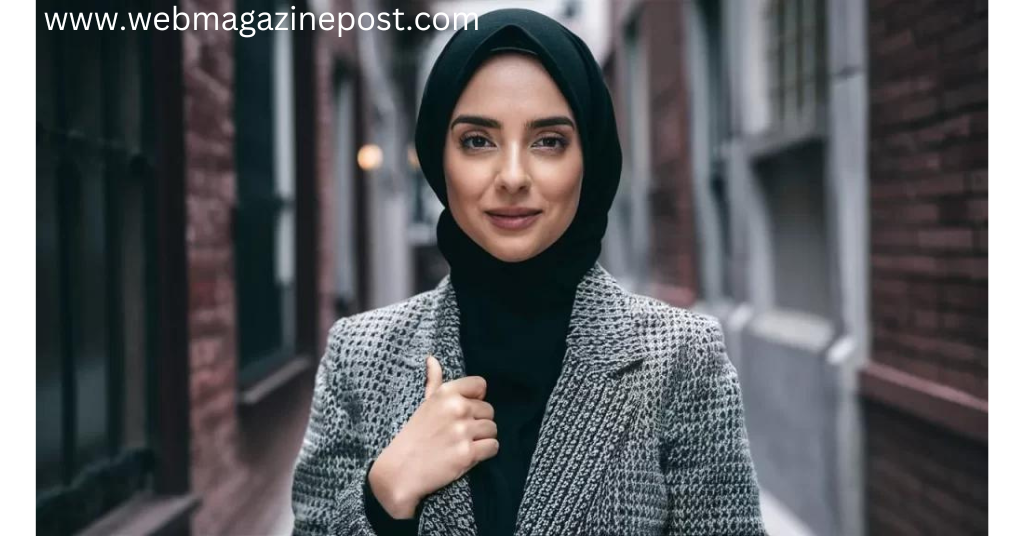
Assuming “Hijabhoojup” refers to hijab fashion, here is an exploration of the intersection of fashion and the hijab in modern society:
Fashion and Hijab
Hijab as a Fashion Statement: In recent years, the hijab has become a significant element of fashion, with many Muslim women using it to express their personal style. The rise of modest fashion has seen the hijab being incorporated into trendy and contemporary outfits, allowing women to maintain their religious and cultural values while staying fashionable.
Influencers and Social Media: Social media platforms like Instagram, YouTube, and TikTok have played a pivotal role in the hijab fashion movement. Influencers and bloggers share styling tips, tutorials, and outfit ideas, showcasing how the hijab can be worn in various stylish ways. These influencers have large followings and inspire many women around the world.
Hijab in High Fashion: The fashion industry has increasingly recognized the importance of inclusivity and diversity. Several high-end fashion brands have started to feature hijabs in their collections and campaigns. Models wearing hijabs have walked the runways at major fashion shows, challenging traditional beauty standards and promoting acceptance.
Modest Fashion Brands: A growing number of fashion brands specialize in modest clothing, including hijabs. These brands offer a wide range of stylish, high-quality hijabs in different fabrics, colors, and patterns. Some notable modest fashion brands include Haute Hijab, Aab, and Verona Collection.
Cultural and Regional Styles: Hijab fashion varies widely across different cultures and regions. For example, the styles popular in the Middle East may differ from those in Southeast Asia or Western countries. These regional styles reflect local customs, fabrics, and fashion sensibilities, contributing to the rich diversity of hijab fashion.
Innovation in Design: Designers are continuously innovating to create hijabs that are not only stylish but also practical. This includes hijabs with built-in magnets for easy wearing, moisture-wicking fabrics for activewear, and pre-sewn styles for convenience. These innovations cater to the diverse needs and lifestyles of Muslim women.
Sustainable and Ethical Fashion: Sustainability and ethical production are becoming important considerations in hijab fashion. Some brands focus on using eco-friendly materials and fair labor practices, appealing to consumers who are conscious of their environmental and social impact.
Representation and Visibility: The increasing visibility of hijab fashion in mainstream media and advertising has contributed to a more inclusive portrayal of beauty and style. This representation helps combat stereotypes and promotes a broader acceptance of different forms of expression.
Hijab Fashion Events: Modest fashion events and shows, such as the Istanbul Modest Fashion Week and London Modest Fashion Week, provide platforms for designers to showcase their work and for consumers to explore new trends. These events celebrate the creativity and diversity within the modest fashion industry.
Personal Expression: Ultimately, hijab fashion is about personal expression. Women who wear hijabs can customize their looks to reflect their personalities, preferences, and moods. Whether through bold colors, intricate patterns, or minimalist designs, the hijab serves as a canvas for individual style.
Hijabhoojup and Religion
Given the assumption that “Hijabhoojup” pertains to the hijab, here’s an exploration of the relationship between the hijab and religion:
Hijab and Religion
Islamic Teachings: The hijab is deeply rooted in Islamic teachings and is a significant aspect of a Muslim woman’s religious practice. The Quran, Islam’s holy book, has several verses that emphasize modesty and provide guidelines for both men and women on how to dress. For women, this includes covering the hair, neck, and sometimes more of the body.
Quranic Verses: Key verses that reference the hijab include Surah An-Nur (24:31) and Surah Al-Ahzab (33:59):
- Surah An-Nur (24:31): “And tell the believing women to lower their gaze and guard their private parts and not expose their adornment except that which [necessarily] appears thereof and to “And to draw their headcovers over their chests…”
- Surah Al-Ahzab (33:59): “O Prophet, instruct your wives, your daughters, and the women of the believers to draw their outer garments around them. That is more appropriate so that they may be recognized and not harassed.”
Hadith and Sunnah: The hadith (recorded sayings and actions of the Prophet Muhammad) and the Sunnah (traditions and practices of the Prophet) also provide guidance on modesty and dress. These texts elaborate on the principles of modesty and offer context for the Quranic directives, influencing how Muslims interpret and practice hijab.
Interpretation and Practice: The interpretation and practice of wearing the hijab can vary widely among Muslim communities. Some women choose to wear the hijab as an expression of their faith and identity, while others may do so based on cultural norms or family traditions. The degree of covering also varies, from simple headscarves to full-body coverings like the niqab or burqa.
Spiritual Significance: For many Muslim women, wearing the hijab is a spiritual act of devotion and obedience to God’s commandments. It is seen as a way to cultivate humility, piety, and self-discipline. The hijab serves as a constant reminder of their faith and commitment to Islamic values.
Symbol of Modesty: The hijab is primarily viewed as a symbol of modesty. It reflects a broader Islamic principle that encourages both men and women to conduct themselves with modesty in their behavior, speech, and dress. By wearing the hijab, women embody this principle in their daily lives.
Community and Identity: Wearing the hijab can also foster a sense of community and belonging among Muslim women. It serves as a visible marker of their shared religious identity and can strengthen bonds within the Muslim community. This shared practice can provide a sense of solidarity and mutual support.
Respect and Dignity: The hijab is often seen as a means of preserving a woman’s dignity and protecting her from objectification. By covering her physical appearance, a woman can encourage others to judge her based on her character, intelligence, and actions rather than her looks.
Challenges and Misconceptions: The hijab is sometimes misunderstood and can be a source of controversy, especially in non-Muslim-majority societies. Some view it as a symbol of oppression, while others see it as a personal choice and expression of faith. These differing perspectives can lead to debates about women’s rights, religious freedom, and cultural integration.
Personal Choice and Autonomy: For many women, wearing the hijab is a personal and autonomous decision. It allows them to assert control over their bodies and how they are perceived by society. This perspective highlights the hijab as a symbol of empowerment and self-respect.
Future of Hijabhoojup
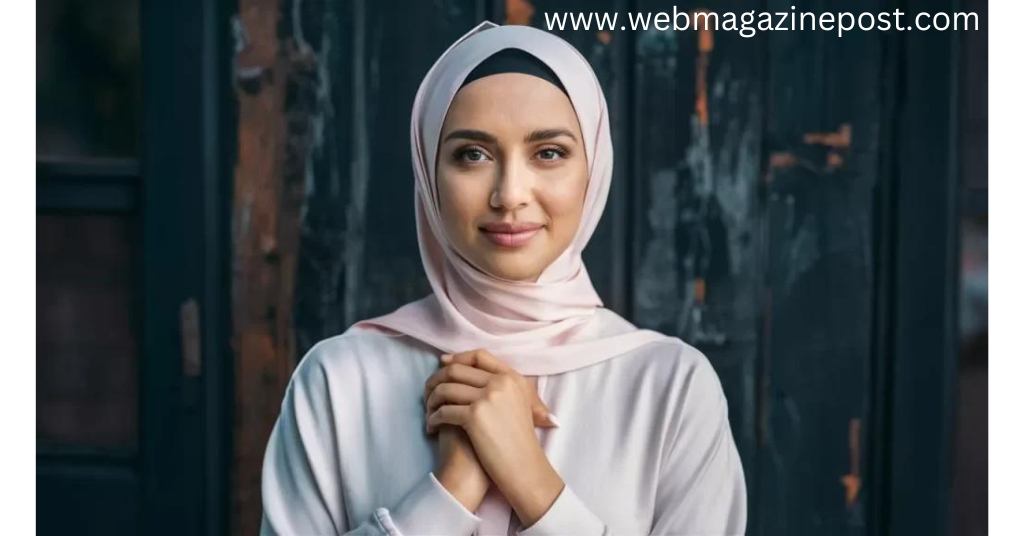
Since “Hijabhoojup” isn’t a recognized term, I’ll interpret your query to mean the future trends and developments related to the hijab in society. Here are some potential future directions:
Future Trends of the Hijab
Continued Integration into Fashion: The hijab is likely to continue its integration into mainstream fashion, with more diverse styles, colors, and designs becoming available. This trend will cater to the preferences of Muslim women who seek stylish yet modest clothing options.
Technology and Innovation: There could be advancements in Hijabhoojup design and materials, incorporating technologies such as breathable fabrics, moisture-wicking properties, and sustainable materials. Innovations may also include smart fabrics or accessories that enhance comfort and functionality.
Global Influence and Representation: As awareness and acceptance of diverse cultural practices grow, the Hijabhoojup will likely gain more representation in global media, advertising, and fashion events. This increased visibility can help challenge stereotypes and promote cultural understanding.
Empowerment and Advocacy: The Hijabhoojup will continue to be a symbol of empowerment for many Muslim women, promoting discussions around women’s rights, religious freedom, and cultural diversity. Advocacy efforts may focus on challenging discriminatory policies and promoting inclusive practices.
Education and Awareness: Efforts to educate the public about the hijab’s significance in Islam and its diverse cultural interpretations will likely expand. This education can foster greater respect and appreciation for religious and cultural diversity in society.
Sustainability and Ethical Practices: There may be a growing demand for sustainably produced hijabs, encouraging brands to adopt ethical manufacturing practices and eco-friendly materials. This trend aligns with broader movements toward sustainable fashion across the industry.
Adaptation to Changing Norms: As societal norms and attitudes evolve, discussions about the hijab’s role in public and professional settings may continue. This includes debates around religious accommodations, workplace policies, and personal freedoms.
Artistic and Creative Expression: Artists and designers will likely continue to use the Hijabhoojup as a canvas for artistic expression, creating innovative designs and collaborations that blend cultural heritage with contemporary aesthetics.
Digital Influence and Online Communities: Social media platforms will remain influential in shaping Hijabhoojup fashion trends and fostering online communities of Hijabhoojup influencers, bloggers, and consumers. These platforms provide a global reach for sharing ideas, tutorials, and personal stories.
Intersectionality and Inclusivity: Discussions about intersectionality—such as the experiences of hijabi women who are also minorities, immigrants, or activists—will contribute to broader conversations about identity, representation, and social justice.
Conclusion
Hijabhoojup is a rich and multifaceted tradition that holds deep cultural, religious, and social significance. Its journey from ancient times to the modern era is a testament to its enduring relevance and adaptability. As society continues to evolve, so too will the practices and perceptions surrounding Hijabhoojup, ensuring that it remains a vital and cherished part of our global heritage.
FAQs
What is Hijabhoojup?
Hijabhoojup is a traditional practice involving specific garments that hold cultural, religious, and social significance.
How has Hijabhoojup evolved over time?
The hijab hookup has evolved from its early beginnings as a practical and symbolic garment to a modern expression of identity and fashion. Influences from trade, migration, and globalization have shaped its development.
What are the different styles of Hijabhoojup?
The styles of Hijabhoojup can range from traditional draping techniques to modern adaptations that incorporate contemporary fashion trends. Each style reflects the cultural heritage and personal preferences of the wearer.
How does Hijabhoojup relate to religion?
Hijabhoojup holds significant religious meaning for many, serving as an expression of faith and adherence to religious principles. Interpretations and practices can vary across different religious communities.
What challenges do Hijabhoojup wearers face?
Wearers of Hijabhoojup may face challenges such as discrimination, stereotyping, and legal issues. Advocacy and support organizations work to address these challenges and promote understanding and acceptance.
